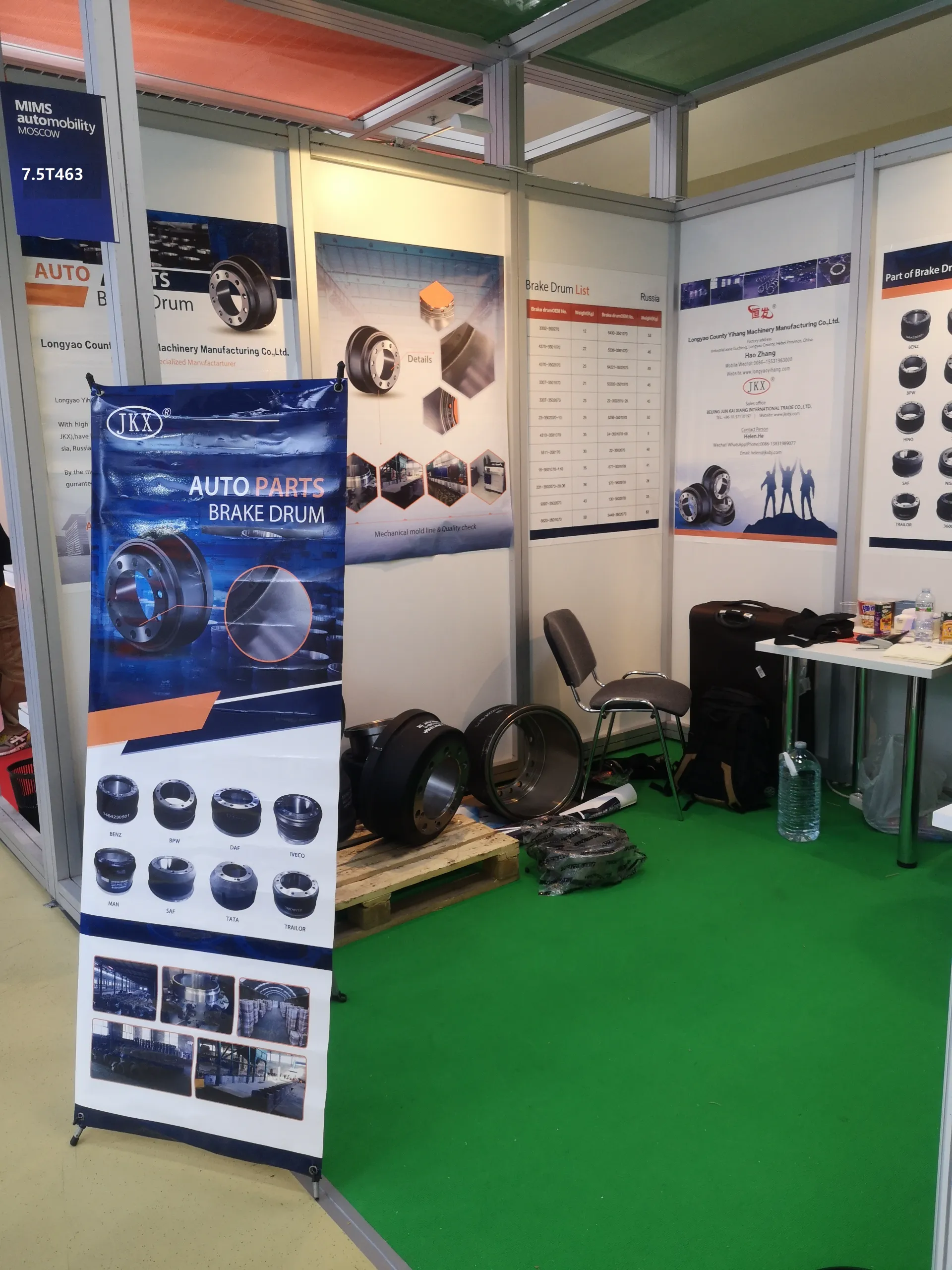Jul . 30, 2024 22:26 Back to list
Understanding the Differences Between Brake Drums and Brake Rotors in Vehicle Braking Systems
Are Brake Drums the Same as Rotors?
When it comes to vehicle braking systems, understanding the components involved is essential for both maintenance and performance. Two primary types of braking systems many vehicles use include drum and disc brakes, which feature either brake drums or rotors. While both serve the fundamental purpose of slowing down or stopping a vehicle, they are not the same. This article will explore the key differences between brake drums and rotors, their functions, and implications for vehicle performance.
Definitions and Basic Functions
Brake Drums Brake drums are cylindrical components that house the brake shoes. When the brake pedal is pressed, hydraulic force pushes the brake shoes against the drum's interior surface. This friction slows down the wheel's rotation, aiding in braking. Brake drums are typically made from cast iron or steel and are commonly found in older vehicles and some modern vehicles, especially those designed primarily for cost-effectiveness.
Are Brake Drums the Same as Rotors?
Key Differences
are brake drums the same as rotors

1. Design and Operation The fundamental difference lies in their design and how they function. Brake drums rely on the expansion of brake shoes against the inner surface for braking. In contrast, brake rotors engage with brake pads on the outer surface. This difference can influence how heat is managed within the braking system, with rotors typically offering better heat dissipation due to their design and exposure to airflow.
2. Heat Management Disc brakes (with rotors) excel in heat management due to their design. The open nature of rotors allows for better airflow, which helps dissipate heat generated during braking. In contrast, brake drums can trap heat, leading to brake fade—an issue where the brakes become less effective as temperatures rise. This can be especially concerning during prolonged or heavy braking.
3. Performance and Application Disc brakes are generally more efficient and provide better stopping power, making them the choice for performance vehicles and modern designs. They also allow for more precise braking, contributing to enhancements in vehicle safety. Brake drums, while effective, may struggle under heavy loads and long-term use, making them more suitable for lighter-duty applications.
4. Maintenance and Wear Brake drums can be more susceptible to wear and require regular maintenance to ensure they function properly. The shoes must be replaced periodically, and the drum can become warped or damaged. Rotors also need replacement and maintenance, but they typically offer a longer lifespan and can be resurfaced to extend usability.
Conclusion
In summary, while brake drums and rotors serve the same fundamental purpose of facilitating vehicle deceleration, they are distinct components with different designs, functions, and implications for performance. Understanding these differences can help car owners make informed decisions about brake maintenance, upgrades, and overall vehicle performance. Whether your vehicle has drum brakes, disc brakes, or a combination of both, ensuring that your braking system is in optimal condition is vital for safety and driving efficiency. As technology advances, the trend leans more toward the use of disc brakes due to their superior performance characteristics, with many modern vehicles moving away from traditional drum braking systems.
-
ROR Web Development: Build Fast, Scalable, Secure Apps
NewsAug.17,2025
-
Scania Brake Drums: OEM Quality for Optimal Safety & Durability
NewsAug.16,2025
-
R.V.I: Advanced Remote Visual Inspection for Precision
NewsAug.15,2025
-
Discover HYUNDA: Innovative Vehicles, Equipment & Solutions
NewsAug.14,2025
-
R.V.I: Unlock Advanced Insights & Real-time Performance
NewsAug.13,2025
-
Kamaz Brake Drum: Durable & Reliable for Heavy Duty Trucks
NewsAug.12,2025
